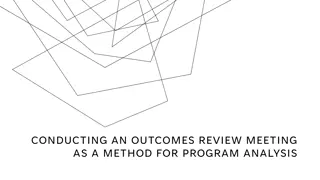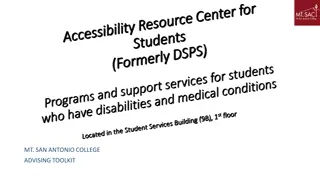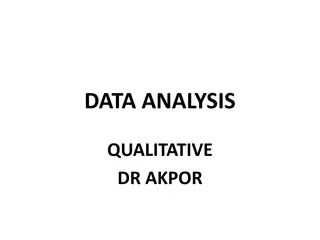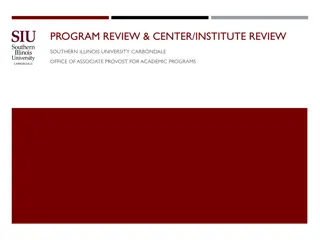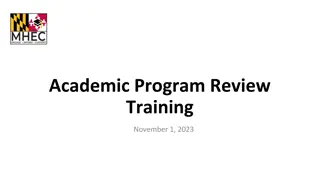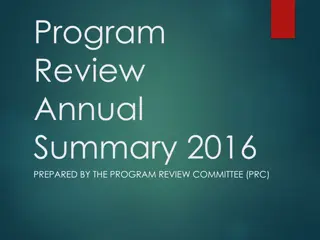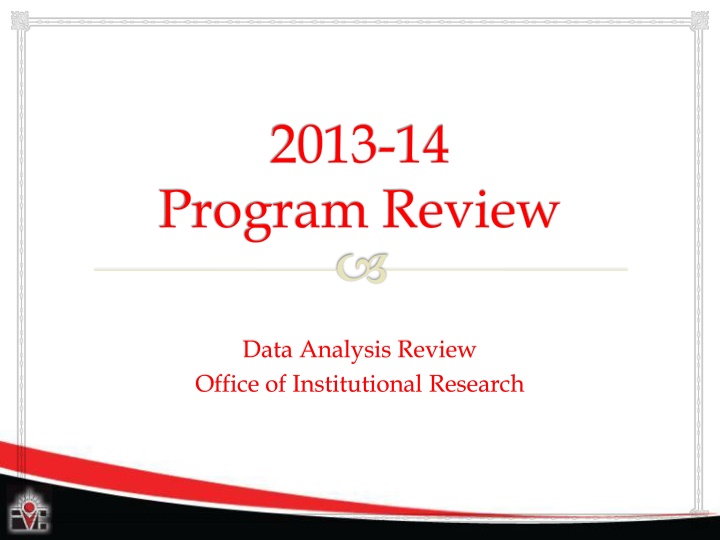
Program Review Data Analysis 2013-14 and Program Health Summary
Analyze data on program enrollment, productivity, success, and more for the 2013-14 academic year. Explore trends, percentage changes, and external factors affecting course patterns.
Download Presentation

Please find below an Image/Link to download the presentation.
The content on the website is provided AS IS for your information and personal use only. It may not be sold, licensed, or shared on other websites without obtaining consent from the author. If you encounter any issues during the download, it is possible that the publisher has removed the file from their server.
You are allowed to download the files provided on this website for personal or commercial use, subject to the condition that they are used lawfully. All files are the property of their respective owners.
The content on the website is provided AS IS for your information and personal use only. It may not be sold, licensed, or shared on other websites without obtaining consent from the author.
E N D
Presentation Transcript
2013-14 Program Review Data Analysis Review Office of Institutional Research
Data Program Level Enrollment Fill Rate Number of Sections Mass Cap Average Class Cap Average Class Size FTES FTEF Grade distribution* Productivity Number of degrees/certificates awarded Success Retention Transfer Day/Evening Distance Education* Ethnicity* Gender*
Data Course Level Number of Sections Enrollment Fill Rate Success Retention Productivity Ethnicity * Distance Education* Gender *
Section B Present Data Analysis and Program Health 1. Summarize and analyze all disaggregated data by day, evening, and distance education regarding enrollments, fill rates, productivity, completion, success, retention, persistence, and transfer. Analysis should consider: 1. Trending data; comparing to past semesters 1. Fall to Fall, Spring to Spring 2. Percentage Change will be listed as part of the data 2. Explaining any significant drops or spikes in rates, measured by change in percentage (both positive and negative) 3. External factors that could had an impact on course taking patterns 4. Include any qualitative information that supports the data 5. Avoid restating the data without providing any additional support


